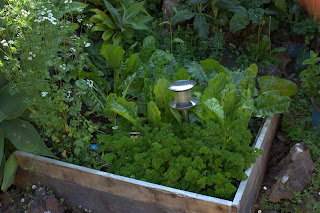Constant WiFi Shield Issues
I enthusiastically started building the control system for the Aquaponics using an Arduino Uno with an official Arduino Wi-Fi shield. Almost immediately I encountered constant hangs after a period of about 6 hours where if the WiFi shield was being used, even if it was just a trivial example sketch then the Arduino would just hang suddenly. After lots of reading I discovered a feature called a Watchdog Timer that I was sure was going to solve my problem. After messing about for a while I got the hang of the watchdog timer and it was working quite nicely. Time for another go with the WiFi shield. Nope, still hanging after about 6 hours regardless of what code I was running. The watchdog timer was unable to reset the board. I tried upgrading the firmware on the WiFi shield but alas, no improvement. More Googling revealed this thread which pretty much confirmed my suspicions that the WiFi shield is not ready for serious use where reliability is an issue.Resort to Wired Ethernet
Ok, I thought after spending a day trying to see if I could fix the issue as the source code for the WiFi shield firmware was available I realized I was well over my head. I decided that simply working around the problem was the best approach. I got a wired Ethernet shield and plugged it into an access point acts as a bridge to the WiFi in the flat.Memory Constraints
This setup worked nicely for a while but as I implemented more and more features and restructured the code to represent a maintainable, expandable code base I started to begin to run very, very close to the available memory limit of 2048 bytes. The result was that, the closer I began to run to this limit, the less stable and more frequent the resets became. I suspect this is due to the code trying to allocate a buffer for an incoming message or something and there isn't a large enough amount of continuous free space. Everything grinds to a halt and we end up resetting, every 30 minutes or so. The watchdog time was doing it's job nicely. It's just a shame it had to do it so frequently.A quick search of MindKits.co.nz revealed a larger Arduino Mega 2560 with 8k of RAM, 4x more than the Uno. After upgrading to this larger model I noticed that with a decent amount of memory now being free I no longer got the frequent hanging that I was seeing with the Uno. Things were looking good then after a few hours, disaster, the board hung again requiring manual intervention. The bug that caused this was trivial to find, an accidental infinite loop when the web server returns a strange response. What was concerning however was that the watchdog timer failed to reset the Mega.
Mega 2560 Bootloader and the Watchdog Timer
I uploaded a trivial sketch to confirm that the watchdog was working and sure enough when the timer expired, the Arduino would hang rather than reset.More Googling led to the discovery that the bootloader that ships with the Mega 2560 doesn't support the use of a watchdog timer but can easily be upgraded with an ISP programmer. In fact the Arduino IDE v1.0.5 comes with a version of the bootloader that supports the watchdog timer.
Great, I thought, I have a USBtinyISP that should do the job nicely. Wrong again, the USBtinyISP only supports ROMs up to 128K and the Mega 2560 is 256k. After further Googling, I discovered that I could use the Arduino Uno itself as an ISP programmer and I could use that to in turn flash the watchdog compatible bootloader to the Mega 2560.
However, no amounts of searching could I find a clear guide of how to wire up the Uno to the Mega to make it go so after consulting the pinouts for both shields I was able to match up the following:
To Flash a Mega 2560 Bootloader from an Arduino Uno
- Open the Arduino IDE v1.0.5.
- Tools -> Board -> Arduino Uno
- Set the Serial Port
- Open the ArduinoISP example sketch (File -> Examples -> ArduinoISP)
- Plug the Uno in with the USB cable
- Compile and upload
- Unplug the Uno
- Wire it up to the Mega 2560 with the wiring table below
Mega Uno GND GND 5V 5V Reset 10 51 11 50 12 52 13 - Select Tools -> Board -> Arduino Mega 2560 or Mega ADK
- Select Tools -> Programmer -> Arduino as ISP
- Plug the USB cable back into the Uno
- Select Tools -> Burn Bootloader
avrdude: verification error, first mismatch at byte 0x1e000
0xff != 0x0d
avrdude: verification error; content mismatch
This didn't matter and my watchdog now works perfectly.
























